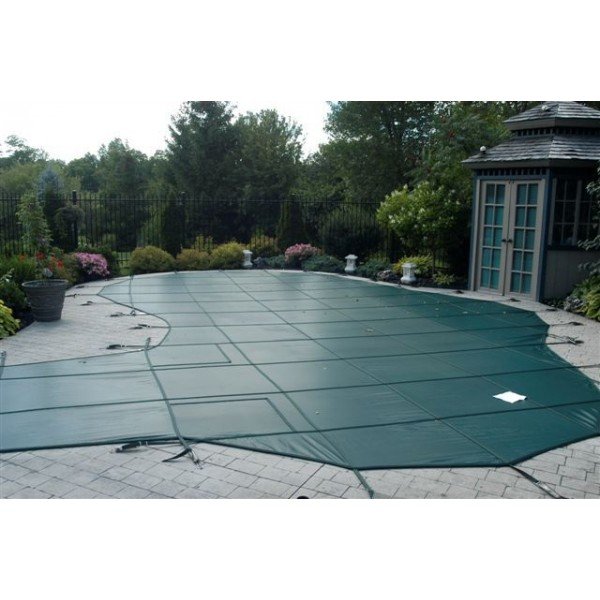

Dogs and Swimming Pools: What You Should Know
Most pups see a swimming pool and instantly know what its for. While most dogs are natural water-loving animals, there are still some protective measure that should be taken before you allow your dog to jump on into your pool.
Prior to swimming be sure your dog is groomed: If your dog is long-haired, you want to be sure to keep it as clean and trimmed as possible if they like to swim. Hair can greatly affect the filtration system of your pool and will require you to clean your skimmer basket more often.
Keep your dog's nails trimmed : Sharp nails on a dog are more likely to scratch when they are happy and playing in the pool, which can be dangerous to swimmers and to your pool liner.
Use doggy sunscreen : Because the sun can affect animals as well, you are going to want to protect them. Purchase a pet specific sunscreen and use it each time that your dog is outside swimming.
Be cautious when using pup toys while swimming: With poor depth perception, a dog trying to grab their toy on the edge of the pool can actually chip their teeth if not careful.
Rinse them off afterwards: Swimming can cause skin and eye irritation for dogs, just as it can for humans, when they spend the afternoon in the pool. By rinsing your dog off after a swim it can help to avoid some of this irritation.
Take baby steps when introducing swimming : Rather than push your dog into the water, start showing him how to swim slowly. Carry him in the shallow water with you, or have him walk in with you. Most dogs will naturally take off swimming, however there are some who might get nervous and start flailing. If your dog can't swim or doesn't take to the water you can use a doggy swimming vest.
Don't allow them to drink the pool water : After strenuous swimming you are going to want to be sure your dog drinks enough fresh water, and not from the pool. He is likely to have to urinate after ingesting so much water as well, so give him plenty of opportunities to.
Put a marker where the exit of the pool is : Unfortunately, dogs don't have a great sense of depth perception, so you will need to denote where the stairs are for his exit. The best way to do this is by putting a large potted plant at the top of the stairs for them to see clearly. For those pools that don't have steps you can purchase a pet specific non-slip ramp.
Teaching Your Pup How He Should Swim in a Pool
If your dog is new to swimming and hasn’t been in a pool before, it’s important to give them time to adjust and learn at their own pace. Start slow by introducing them to the pool’s first step, allowing them to get their paws wet and gradually acclimate to the water. This helps your dog become more comfortable with the new experience.
Remember, the goal is to support your dog, not restrain them. Gently cradle their body under their stomach for added reassurance, and offer them their favorite treats as positive reinforcement. This will help them feel more at ease. As your dog gains confidence, you can slowly encourage them to move deeper into the pool. If they take to the water right away, reward them with treats for being brave!
An additional tip to ease the process is to invite a friend or neighbor with a dog that your pup knows and feels comfortable with. Having another dog, especially one that’s already experienced at swimming, can make your dog feel more at ease. Seeing a familiar pup swim confidently in the pool can encourage them to give it a try too!
Remember to Care for Your Pool After a Swim
You want to be sure to sanitize your pool properly after a dog has been swimming in it. This should include using an enzyme chemical to help remove some of the oils and skin build-up that dogs can leave in the pool water. These enzymes can be found at your local pool supply store and can be done once a week, or more frequently if your dog swims often. You should also keep some of the following in mind when maintaining a pool that has dogs swimming in it.
After heavy use you should always shock your pool
Remove debris, like dog hair, from the pump baskets and skimmer
Check the pressure on your filter, should it be between 5 and 10 psi you should backwash it
Maintain balanced alkalinity and pH at all times
Keep in mind that allowing your dog to swim in a pool does provide them with great exercise and offers mental stimulation, however you don't want to push your dog to swim. Always remember that water safety means keeping the safety of each of your family members in mind, including your dog.
Your Cart
Looks like there’s nothing in your cart.
We can help with that.



































